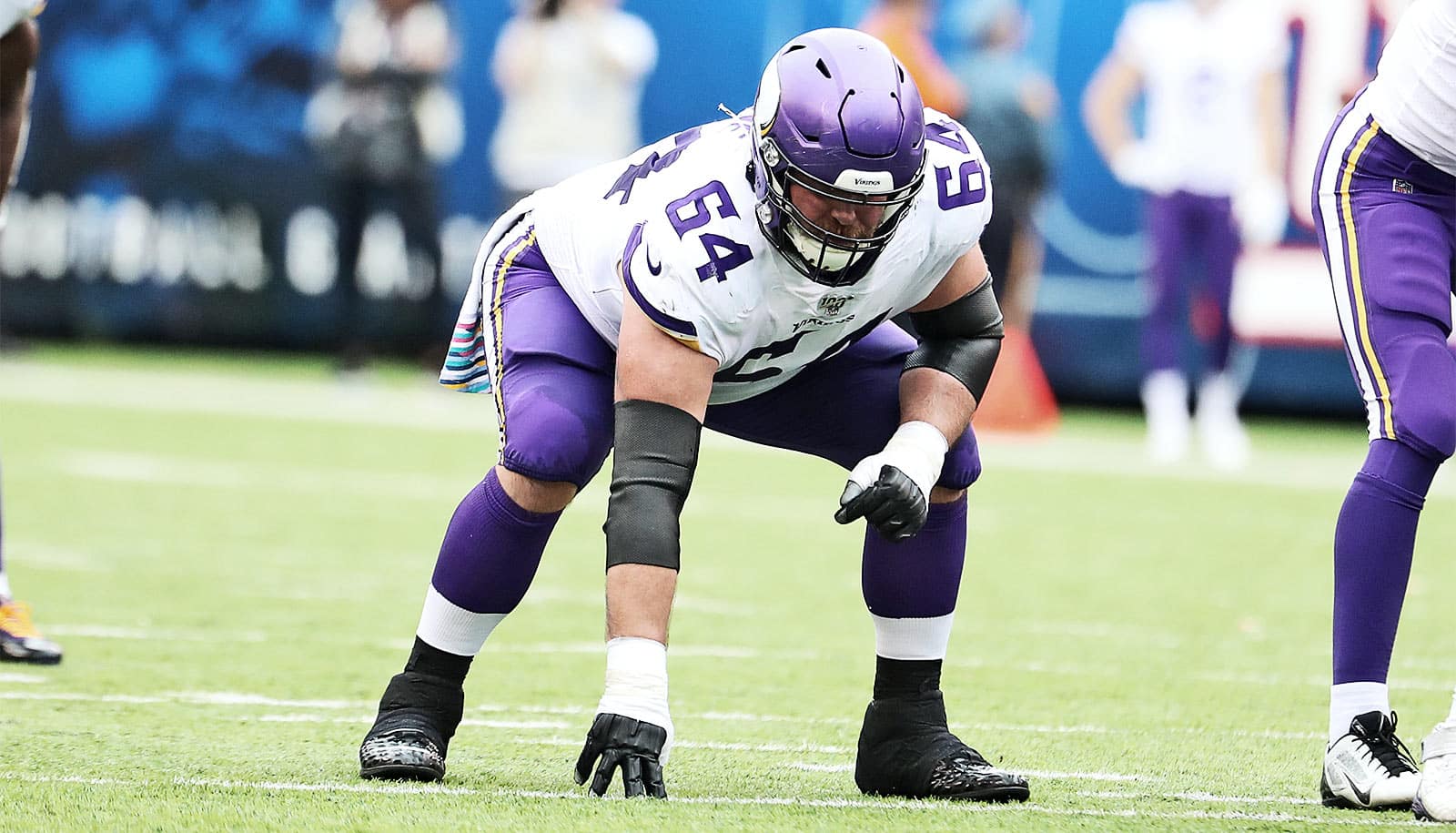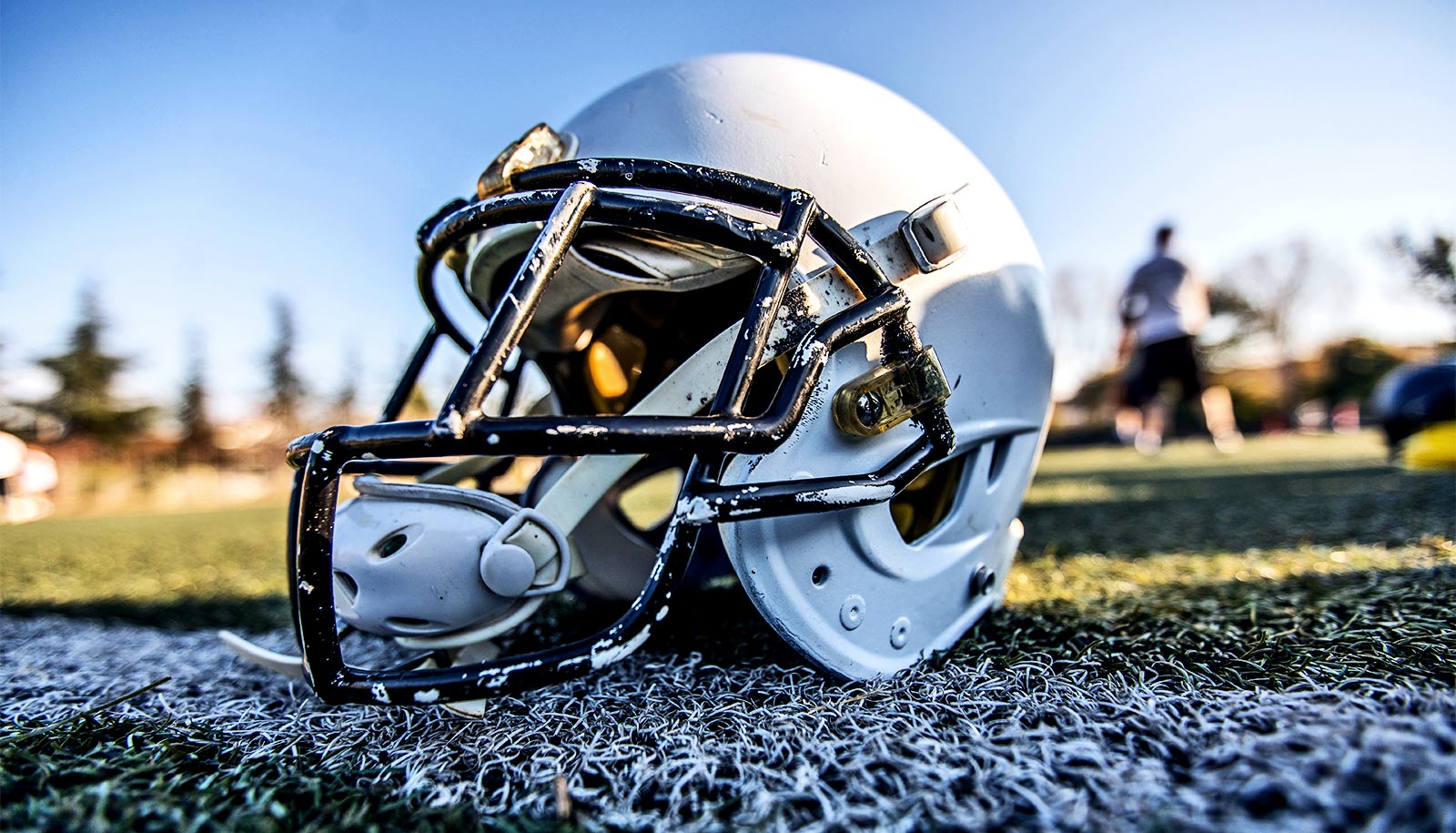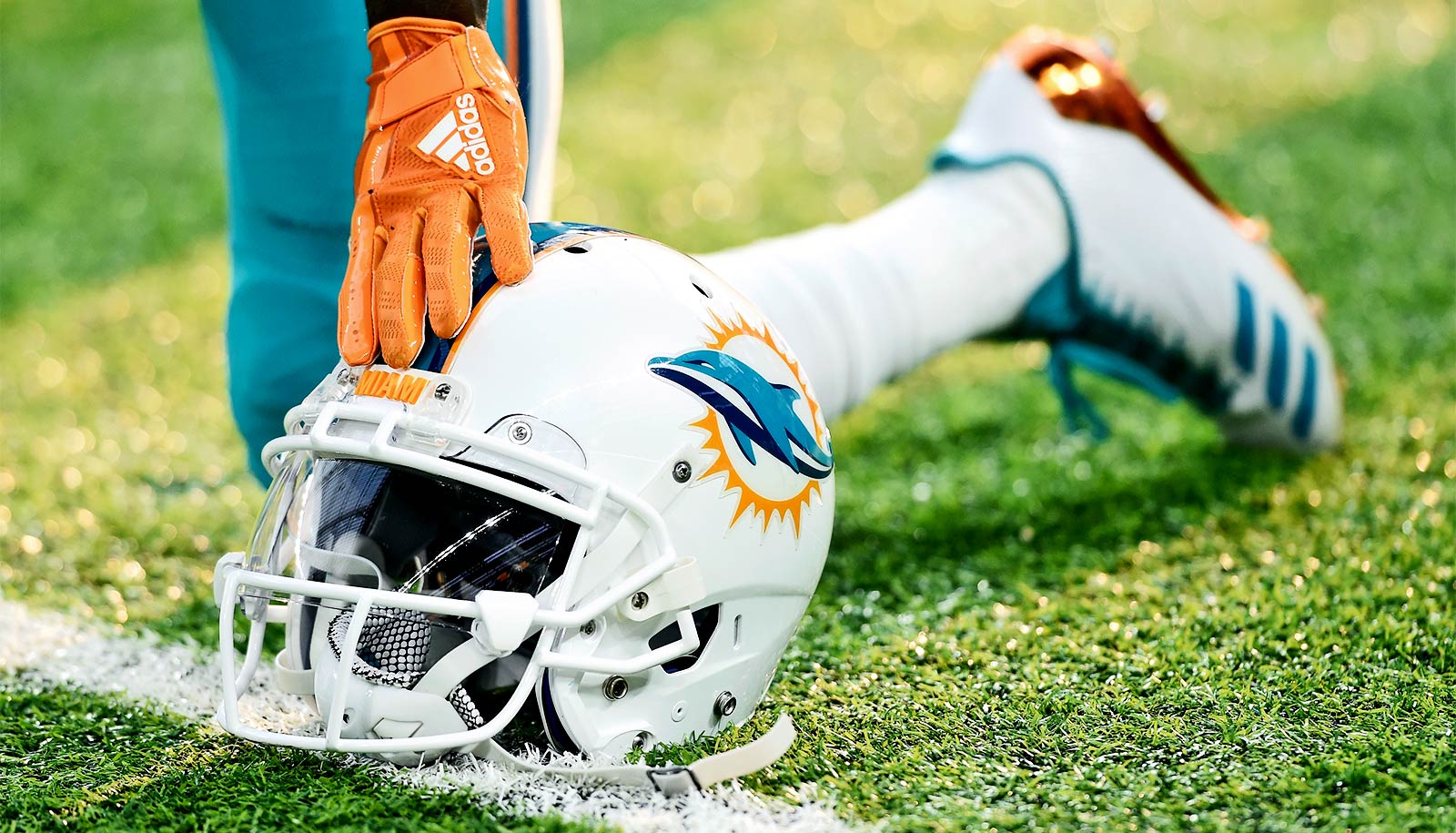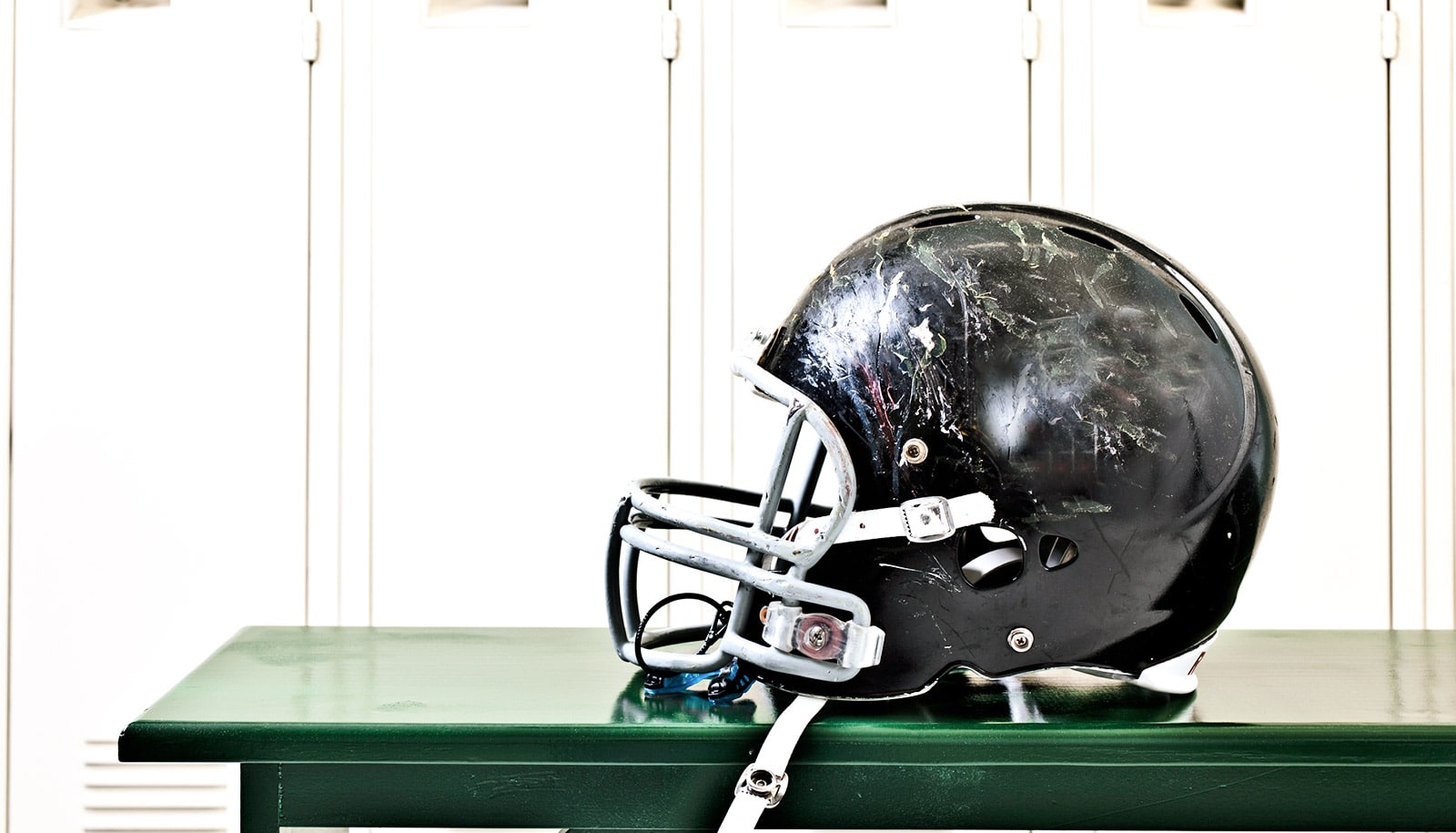A simple change to the starting stance of players on the offensive line in American football might reduce the burden of repetitive hits to the head, researchers report.
Repetitive hits to the head can cause brain damage without actually leading to a concussion, past studies have suggested.
The study shows that offensive linemen experienced at least 40% fewer hits to the head if they started a play standing up, rather than with their fingers touching the ground. The slight positional change could eliminate a significant number of hits without affecting the game, the researchers say.
Offensive linemen are known to take on more head impacts than any other player in the game.
“An offensive lineman tends to start off in a three-point stance, which means that one hand remains in contact with the ground until the start of the play, similar to sprinter fashion. The first move is always to come up, and most players tend to lead with their head,” says Eric Nauman, a professor of mechanical engineering and basic medical sciences at Purdue University.
“If you’re required to be in a two-point stance, meaning standing up with no hands on the ground, then you’re already up a little bit. You’ve already got your hands in a good position and it’s harder, actually, to lead with your head.”
The study in the Clinical Journal of Sport Medicine observed players participating in The Spring League, a professional football developmental league.
The findings back a rule change suggested by Paul Auerbach, professor emeritus in the emergency medicine department at the Stanford University School of Medicine and an adjunct professor of military and emergency medicine at the F. Edward Hébert School of Medicine of the Uniformed Services University of the Health Sciences.
Based on his experience as a physician for football teams at the high-school, collegiate, and professional levels, Auerbach had a hunch that eliminating the “down lineman” would reduce hits to the head. He wrote a letter suggesting this rule change in 2016, which is published in the Journal of the American Medical Association. He repeated his suggestion in a 2018 opinion editorial that appeared in the Wall Street Journal.
“It seemed logical that if something could be done to lessen the number of potentially injurious blows to the heads of linemen, that this would be desired by people who care about making the game safer. So, I was delighted when I was contacted by Brian Woods, CEO of The Spring League, who inquired what he might do to help figure this out,” Auerbach says.
Auerbach and a team led by Nauman and Thomas Talavage, a professor of electrical and computer engineering and biomedical engineering at Purdue, set out to investigate this suggested rule change in an observational pilot study of three Spring League practice sessions and one exhibition game in July 2018 in San Diego.
The researchers glued sensors behind the ears of 78 participating athletes each time that they played. The sensors allowed the researchers to record the number of hits and how hard they were. The participating athletes represented all positions on the team.
Video footage indicated which players were on the field for each play and whether players positioned on the offensive line were in a two-point stance or a three- or four-point stance.
The researchers found that offensive and defensive linemen collectively took on the greatest number of hits to the head in a game: 98 hits for offensive linemen and 52 hits for defensive linemen.
Linebackers and tight ends, however, experienced the hardest hits—many of which were greater than 60 times the force of gravity. Nauman and Talavage have previously seen that hits greater than 50 times the force of gravity start to affect brain chemistry.
Offensive linemen in a two-point stance sustained fewer hits than those in a three- or four-point stance, which led to at least a 40% reduction in hits.
“If nothing else, this study suggests that you can actually make a big difference with rule changes that quite honestly, at least from our perspective, didn’t affect the game play in any meaningful way. In fact, if you make everybody start in a two-point stance, it’s harder to tell if it’s a run or pass play,” Nauman says.
According to the researchers, this study is the first to look at a specific intervention for American football and see an effect on real plays.
While the study was small, the researchers believe that there are enough data to advocate for a rule change.
“Forty percent fewer hits would translate to both games and practices. The next step is to improve coaching and blocking and tackling techniques, which could lead to reducing even more hits to the head,” Talavage says.
Researchers are currently developing helmet sensors that would help referees to better call when players try to “spear,” or use their heads as weapons.
This study received no external funding.
Source: Purdue University



